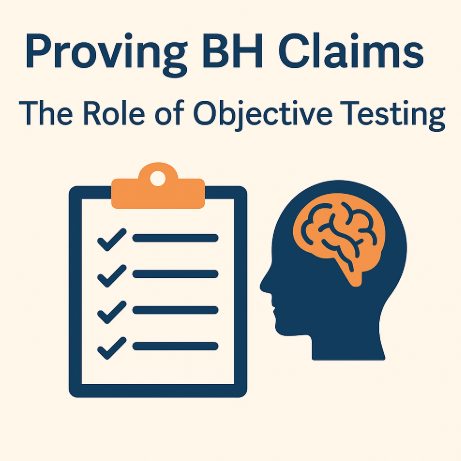Integrating Behavioral Health Screenings
Integrating Behavioral Health Screening in Workers’ Compensation Care
The role of behavioral health in Workers’ Compensation (WC) care has historically been underrecognized. One of the primary challenges in gaining industry-wide acceptance is the lack of objective diagnostic evidence. While physical injuries can be confirmed through imaging or electrodiagnostic studies—such as fractures on X-rays, tumors on CT scans, or nerve damage via nerve conduction tests—conditions like depression, anxiety, trauma, and pain are more complex, subjective, and often invisible.
Over the past decade, the importance of behavioral health in injury recovery has gained traction in Workers’ Compensation. Yet, stigma remains, and many stakeholders continue to underestimate the value of timely, evidence-based behavioral health intervention. At ProMedView, we are committed to changing that.
Our Approach: Making the Invisible Measurable
A core component of our strategy is the integration of standardized, validated assessment tools into the treatment process. These tools help us:
Quantify symptom severity.
Track progress over time.
Objectively demonstrate clinical outcomes.
Strengthen our message that behavioral health interventions improve recovery trajectories and reduce claim duration.
Best Practices for PMV Providers
To support this initiative, the following screening tools are now available in the ProMedView Provider Portal:
Please incorporate at least one of these assessments during your initial intake session and at the conclusion of treatment. A brief discussion of the results should be included in your documentation.
If you currently use another validated behavioral health screening tool and would prefer to continue, let us know—we are happy to review and add it to the portal.
Scoring and Interpretation Guidelines
PHQ-9 (Depression Severity)
0–4: Minimal
5–9: Mild
10–14: Moderate
15–19: Moderately Severe
20+: Severe
GAD-7 (Anxiety Severity)
0–5: Minimal
6–10: Mild
11–15: Moderate
16–21: Severe
Beck Depression Inventory (BDI)
0–9: Minimal to No Depression
10–18: Mild Depression
19–29: Moderate Depression
30–63: Severe Depression
Clinical Interpretation: What the Scores Mean
Minimal Depression/Anxiety
The individual is likely functioning well with minimal disruptions in mood or behavior. While transient stress or sadness may occur, these symptoms do not interfere significantly with daily life.
Mild Depression/Anxiety
Symptoms are present and may affect mood, motivation, or concentration. Though functional capacity is typically preserved, support or brief interventions can prevent escalation.
Moderate Depression/Anxiety
Symptoms are more pronounced and likely interfere with work, relationships, or daily routines. Treatment is recommended, including counseling and/or medication, to restore function and prevent chronicity.
Severe Depression/Anxiety
Marked impairment is evident. Individuals may be socially withdrawn, experience hopelessness, or have difficulty maintaining basic activities. Immediate intervention is critical to ensure safety and facilitate recovery.
Next Steps
✅ Log into the Provider Portal to access these tools.
✅ Begin integrating screenings into your intake and discharge workflow.
✅ Document results and clinical interpretation in your initial and follow-up notes.
✅ Share any additional tools you use that may be a good fit for our portal.
Together, we are advancing the standard of care in Workers’ Compensation—bringing measurable outcomes to the behavioral health landscape and fulfilling our mission of Building Resilience, Restoring Lives.
If you have questions or need support, please contact us at 407-988-4090 or consult@promedview.com. We are here to support you!
We are seeking BH Providers nationwide.
If you haven’t joined us yet, request information on our unique program today!
Prefer to skip the call?
Click here to submit a provider request form and we’ll be in touch soon.


